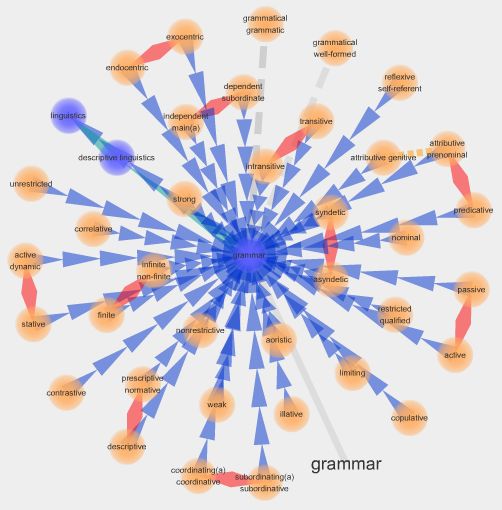First, I came across this infographic below dealing with a vexing question: Does Texting Hurt Your Grammar? The concern is that when texting we take shortcuts which 'look' bad when texting professionally, and may hurt students' incorporation of grammar rules. Here are a few examples of shortcuts:
 |
| From: http://www.downgraf.com/inspiration/does-texting-hurt-your-grammar-infographic/ |
This infographic (which I believe was crated by Best Infographics and also found at http://www.onlinecollege.org/2013/02/12/does-texting-hurt-your-grammar/ and also found at http://visual.ly/does-texting-hurt-your-grammar) relates that "Children are more likely to remember these new texting rules and abbreviations than old school rules such as “i before e except after c” or other grammar rules."
My only question is where were these results obtained, and on how many students. That said, it still is powerful and effective at making a point:

So what's the story and what does research tell us?
According to Alan Mozes (HealthDay Reporter, 8/8/2012) A new study ("Texting, techspeak, and tweens: The relationship between text messaging and English grammar skills" by Drew P. Cingel and S.Shyam Sundar - first published in New Media & Society, May 11, 2012) warns that texting among young teens may be undermining their grammar skills. This concern stems from the results of standardized language testing and surveys among 228 middle school students grades six through eight between the ages of 10-14 from central Pennsylvania. Co-author of the study, S. Shyam Sundar, co-director of the Media Effects Research Laboratory at Pennsylvania State University noted that:
"...this is correlational, not causal...while we see an association between texting and grammar problems among teens, we cannot say that one is actually causing the other...However...compared to those who text very little, those middle schoolers who texted a lot did much more poorly in terms of their offline grammar skills...[suggesting] that kids who are using a lot of word adaptations while texting--saying 'gr8', for example, instead of 'great' --are unable to switch sufficiently back to proper grammar and spelling when not texting."Interestingly, (unlike the study noted in the infographic above) in this study no gender differences were found. Simply the more a tween used text shortcuts (sending and/or receiving), the worse their overall grammar performance.
There have, however, been opposing perspectives. Susan Sotillo, associate professor of linguistics at Montclair State University noted that "Children know that when you're in school, you do not use texting language...it's up to the teacher to say it's not acceptable." She further noted that to see the impact of texting on grammar or any language skills, researchers must study thousands of people across a variety of backgrounds and geographic regions.
| From: mywritingblog.com |
- Ending a sentence with a preposition is nothing worth worrying about;
- There is nothing wrong with starting a sentence with a conjunction;
- Perhaps the biggest grammar myth of all is the infamous taboo against splitting an infinitive, as in “to boldly go.” The truth is that you can’t split an infinitive: Since “to” isn’t part of the infinitive, there’s nothing to split. Great writers—including Chaucer, Shakespeare, Donne and Wordsworth—have been inserting adverbs between “to” and infinitives since the 1200s.
Given the state of constant texting and confusing rules of grammar... Below is a list of things parents and teachers can do to help their kids:
| From: blog.mainstreethost.com |
- When texting to kids model correct spelling, grammar, and word usage;
- Encourage and model editing when writing/sending cards, emails, papers, etc.
- If/when you read newspapers / articles / web posts, respond - write letters or comments back and encourage your kids to do the same (when appropriate);
- Point out and reinforce the difference between social texting with shorcuts and writing for school and work;
- Point out the difference between the budding hybrid language of "techspeak" or "textspeak" (what they use when texting where the text is riddled with acronyms and abbreviations) and 'proper' (oh I hate that word - any suggestions) English;
- Offer diverse writing opportunities and projects;
Additional tools/references to help or hurt:
- The TechSpeak to English Dictionary- presenting and defining tech buzzwords (gamification, pivot, corwdfunding, SoLoMo, innovator, pirate, mobile ecosystem, NextGen Web, cloud computing, total users, and engaged users are just a few of the terms listed);
- A free online grammar and writing handbook by Grammarly;
- Rules of grammar provided by The Blue Book of Grammar and Puncturaion;
- Grammar Rules, Exercises and General Overview of Parts of Speech;
- Schoolhouse Rock Grammar videos by DisneyEducation - here are a sampling:
- Conjuction Junction
- Unpack Your Adjectives
- School house Classics: Grammar Rock
That's it for this time!
Thanks for your visit... and please leave your opinions, reflections and suggestions in the comments.

